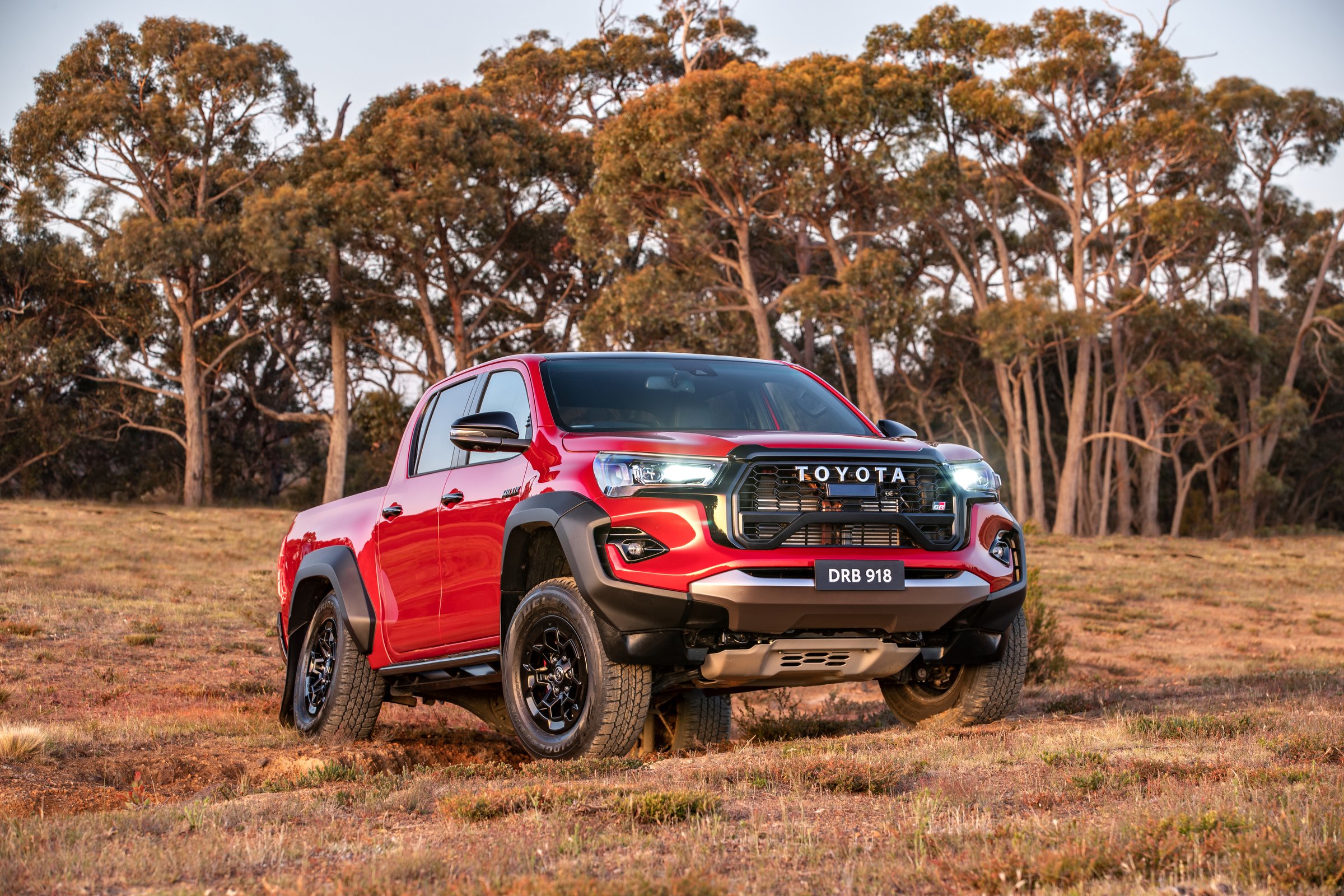GR Sport Hilux – the one that jumps the shark
/Performance-themed Hilux set to land here in late 2023 is revealed.
THE GR Sport Hilux that is set to bump out the New Zealand-specific Mako as the ultimate catch version of the popular doublecab has been fully revealed.
Toyota New Zealand has yet to offer fresh comment on the new hero model, which derives from a widetrack SR5 Cruiser Hilux that was announced last year but has been delayed for delivery until mid-2023 according to information on the brand’s website. TNZ shared its plans for GR Sport when disclosing its intetion for the widetrack update.
Both effectively replace the Toyota New Zealand-developed Mako, because the enhancements which that rig carry cannot transfer.
Potentially, losing the Mako will be a saving on spend; the local development based on the original Hilux SR5 but added more than $20,000 to the sticker – making it a $79,990 buy-in before Clean Car fees.
Toyota NZ has yet to say how much an GR Sport Hilux will cost but it is effectively an adaptation of the widetrack SR5 Cruiser, which is presently advertised for $63,390, plus $3795 Clean Car fee.
Though it has styling enhancements that clearly separate it from the widetrack Hilux and other mainstream double cab editions, the GR Sport isn’t as visually outrageous as the Mako.
However, it has more bite – on this model, the power and torque from the Hilux’s 2.8-litre turbodiesel ramp up to 165kW, from 150kW, and from 500Nm to 550Nm.
Those outputs mean it has more than the 2.2-litre biturbo four-cylinder diesel in Ranger but less than the 3.0-litre V6; the first makes 154kW/500Nm and the larger 184kW/600Nm. It’s still no foil for grunt to the Ranger Raptor, which pumps 292kW and 583Nm, but relies on petrol.
On top of this, it has the 140mm wider track, taller ride height and brake changes – with disc rather than drum rear brakes and larger front discs – as the widetrack SR5 Cruiser and a bespoke suspension tune.
The rear disc brake upgrade brings the Hilux in line with the new-generation Ford Ranger and incoming Volkswagen Amarok, and the more affordable LDV T60, GWM Ute and SsangYong Musso.
In the meantime, TNZ appears to be continuing with the Mako package, as it held enough stock of the outgoing generation of SR5 Cruiser to fulfil its order bank for a build run of 270 units overall.
The Mako achieves Maxxis RAZR All-Terrain tyres (265/60), ARB Old Man Emu BP-51 suspension kit with nitrogen by-pass shocks enabling adjustable compression and rebound control, plus a special front bumper (a hoopless roo-bar in Aussie speak), bash plates, LED light bar, easy access heavy duty recovery hooks, wheelarch flares – which don’t fit on the updated SR5 Cruiser - side steps and rock rails and customised tray.
The third of its kind, but the first officially for NZ (the previous editions restricted to Europe, Japan, Thailand and South Africa) the GR Sport has a more street-wise appearance, though Toyota Japan is assuring it is tough enough for the rough.
It stands out for having a new-look nose which Toyota Japan says was designed in a wind-tunnel to deliver enough cooling to the uprated engine.
The all-terrain tyres, heavy-duty suspension, rear recovery points, and heavy-duty 'rock sliders' instead of side-steps are specific to the GR Sport.
The version gains paddle shifters on the steering wheel for drivers who want to manually select ratios in the revised six-speed automatic gearbox, which has been recalibrated to handle the extra power and sportier driving.
The rear shock absorbers have been moved outboard of the chassis rails for better on-road stability and off-road wheel articulation.
Toyota says new monotube shock absorbers with higher damping force and heat-dissipation capacity – and stiffer coil front springs – are designed to improve the front-rear suspension balance.
The 312mm rear discs are clamped by a single-piston 'floating' caliper.






















